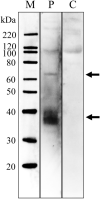Anaphylaxis after jellyfish ingestion with no history of stings: a pediatric case report
- PMID: 34565454
- PMCID: PMC8474888
- DOI: 10.1186/s13223-021-00601-x
Anaphylaxis after jellyfish ingestion with no history of stings: a pediatric case report
Abstract
Background: Jellyfish stings are known to induce allergic skin reactions; however, case reports of anaphylaxis after jellyfish ingestion have been increasing, especially in Asian countries. Some cases of anaphylaxis after jellyfish ingestion have been reported in patients with a previous history of frequent jellyfish stings. Herein, we report a pediatric patient with anaphylaxis after jellyfish ingestion with no history of jellyfish stings.
Case presentation: A 14-year-old girl developed two episodes of anaphylaxis, and her diet diaries revealed that edible jellyfish was common to the meals in both the anaphylaxis events. A skin prick test using five types of edible jellyfish products revealed a positive reaction to some jellyfish, and anaphylaxis was observed after the ingestion of jellyfish in an oral food challenge test. She had no history of jellyfish stings or frequent swimming in the ocean. The basophil activation test showed positive results on stimulation with extracts from various types of edible jellyfish. We observed serum immunoglobulin E (IgE) reactivity to purified jellyfish collagen and jellyfish acid-soluble extracts. Moreover, immunoblotting analysis showed IgE reactivity to two bands at approximately 40 and 70 kDa using purified jellyfish collagen, which may be a causative antigen.
Conclusions: Edible salted jellyfish can be one of the causative foods of anaphylaxis. Clinicians should be aware of the possibility of anaphylactic reactions due to jellyfish ingestion even without a history of jellyfish stings.
Keywords: Anaphylaxis; Basophil activation test; Food allergy; Immunoglobulin E; Jellyfish; Oral food challenge; Skin prick test.
© 2021. The Author(s).
Conflict of interest statement
The authors declare no competing interests.
Figures



References
-
- Edwards EK, Jr, Edwards EK., Sr Immediate, anaphylactic and delayed reactions to jellyfish. Contact Dermat. 2000;43:244–245. - PubMed
LinkOut - more resources
Full Text Sources

